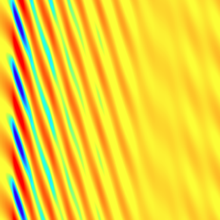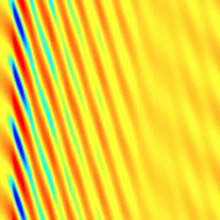Making waves
In 1974 Hawking predicted that black holes emit radiation. A pair of photons is torn apart by the gravitational field near a black hole; one is consumed by it, the other escapes.
The radiation is likely too weak to detect, but in a paper in Physical Review Letters, Silke Weinfurtner and colleagues at the University of British Columbia, Canada, present an experimental demonstration of so-called analog black-hole radiation, providing a “table-top” system in which to test Hawking’s ideas.
Weinfurtner et al. created a “white hole” for surface waves in a shallow trough of flowing water. (In gravity terms, light cannot enter a white hole.) The speed of the water over an airfoil-shaped obstacle blocked the waves, generated downstream, from traveling upstream. The authors confirmed that shallow surface waves convert into pairs of deep-water waves, analogous to photon pairs. Like in black holes, this analog also emits a thermal spectrum of radiation.
While analog experiments do not measure actual black holes, they show that Hawking’s arguments apply broadly, and increase our faith in his prediction’s validity for black holes. – Jessica Thomas





